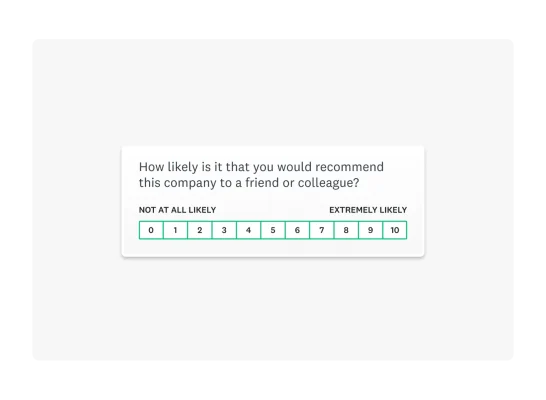Brand equity: Definition, importance, and how to measure it
Discover effective strategies to boost your brand equity and enhance business value.

Brands that capture consumer attention and loyalty have one thing in common: high brand equity.
Research shows that brand reputation—shaped by brand equity—is one of the top reasons for shopper loyalty (44%), alongside positive customer experiences (49%) and value for money (52%).
Before we explain how to build brand equity, let's explore what this term means, why it matters, and how you can measure it effectively.
What is brand equity?
Brand equity is the value a business gains from having a recognizable brand, making its products stand out from generic alternatives. It’s the extra appeal, both emotional and financial, that comes from consumer recognition and perception of your brand. This includes logos, visuals, and the more profound meaning that connects consumers.
Brand equity has three essential components: brand perception, the effect this perception has on your company, and the value of that effect.
Brand equity encompasses both tangible and intangible values:
- Tangible values include metrics like revenue, market share, profit margins, and the ability to command higher prices.
- Intangible values are equally important—these include customer trust, emotional connection, and reputation.
Businesses with positive brand equity:
- Retain customers more easily
- Charge a premium for products
- Successfully launch new products to a receptive market
Conversely, negative brand equity occurs when consumers are willing to pay more for unbranded or competitor products than yours. Negative brand equity often occurs due to:
- Poor experiences
- Product failures
- Ethical controversies
Related reading: How to build and measure brand value
Why is brand equity important?
Building strong, positive equity delivers concrete business benefits that directly impact your bottom line. Companies with high brand equity enjoy significant advantages, including:
- Customer loyalty and retention: Brands with strong equity enjoy higher customer loyalty rates. Customers who trust and connect with your brand are more likely to make repeat purchases and less likely to switch to competitors.
- Premium pricing ability: Consumers willingly pay more for brands they trust and value. Strong brand equity allows you to charge premium prices without losing market share, directly boosting your profit margins compared to competitors with weaker brand positioning. Get started with a price optimization survey template.
- Greater marketing efficiency: Marketing campaigns are more effective and less costly for established brands with high equity. You'll spend less to acquire new customers when your brand already has positive associations.
- Increased market share: Brand equity makes it easier to maintain and grow your market share against competitors, especially during challenging economic times.
- Easier product line extensions: New products launched under a positive brand name are more likely to succeed. Customers who trust your brand are more willing to try your new offerings.
- Buffer against challenges: Brands with strong equity can better withstand market challenges, competitive threats, and occasional missteps.
- Higher business valuation: Companies with brand equity typically command higher valuations when acquired or going public.
Related reading: How to build and measure brand affinity
Key components of brand equity
Brand equity isn't built on a single factor—it results from several interconnected components working together. Your brand image—the overall impression consumers have formed through their experiences and interactions—emerges from these components. Understanding these elements can help you strategically develop and strengthen your brand's position in the market.
1. Brand awareness
Brand awareness measures how familiar consumers are with your brand and how easily they can recognize or recall it. Brand knowledge forms the foundation of positive brand equity—consumers can't develop positive associations with a brand they don't know exists.
Creating a positive impression during these awareness moments is crucial for a recognized brand, as first impressions often determine whether consumers will engage further with your brand. Brand awareness ranges from simple recognition ("I've heard of that brand") to top-of-mind awareness (the first brand someone thinks of in a category).
Example: Coca-Cola's distinctive red and white logo is recognized worldwide, even without the brand name visible.
Get started with our easy-to-launch Brand Awareness Survey Template.
2. Brand associations
Brand associations are the attributes, benefits, and attitudes consumers link to your brand. These associations form in consumers' minds and shape their expectations about your products or services. Collectively, these associations create your brand's meaning, which helps differentiate you from competitors by establishing a unique narrative and emotional connection.
Brand personality is crucial in creating strong, positive, and unique associations that help differentiate your brand from competitors.
Example: Volvo has cultivated strong associations with safety, making it a top consideration for safety-conscious consumers shopping for vehicles.
3. Perceived quality
Perceived quality reflects consumers' subjective evaluations of your product or service quality, regardless of actual objective quality. It's influenced by direct experience, marketing messages, word-of-mouth, and reputation. High perceptions of quality can justify premium pricing and strengthen customer loyalty.
Example: Apple products are perceived as high-quality and innovative, allowing the company to charge premium prices even when competitors offer similar functionality.
4. Brand loyalty
Brand loyalty measures consumers' attachment to your brand and their likelihood of choosing you over competitors. Loyal customers provide reliable revenue and become brand advocates who promote your brand. You can significantly enhance brand loyalty by retaining existing customers through targeted engagement and personalized experiences. Importantly, brand-loyal customers are typically willing to pay higher prices and are less sensitive to price increases than non-loyal customers.
Example: Harley-Davidson inspires such strong loyalty that customers often tattoo the logo on their bodies—the ultimate display of brand commitment.
Related reading: Brand loyalty: What it is, why it’s important, and how to build it
5. Brand differentiation
Brand differentiation strengthens brand equity by establishing the unique attributes that set your brand apart from competitors. Maintaining brand relevance is crucial, as without meaningful differentiation, your brand equity suffers, and your products risk becoming commodities where price becomes the primary purchase driver.
Example: TOMS Shoes differentiated itself with its "One for One" model, donating shoes for each pair purchased, creating a unique position in the footwear market.
6. Brand experience
The brand experience encompasses every interaction consumers have with your brand across all touchpoints, serving as a building block of equity. Consistent, positive experiences reinforce brand equity, while negative experiences can quickly erode it.
Example: Disney creates immersive, magical experiences across its theme parks, movies, and merchandise, delivering on its promise of wonder and imagination.
7. Brand consistency
Brand consistency refers to maintaining uniform messaging, visual identity, and brand promises across all channels and over time. This consistency is vital in building brand equity by creating recognition and reliability in consumers' minds. When all aspects of your brand align consistently, it strengthens overall brand equity by building trust and reinforcing positive brand associations that consumers can depend on.
Example: McDonald's aims to maintain consistency in its restaurant experience, menu offerings, and marketing worldwide, making it instantly recognizable and reliable.
8. Brand trust
Brand trust is a foundational element of brand equity. It reflects consumers' confidence in a reputable brand's reliability, integrity, and commitment to delivering on its promises. Brand equity is impossible without trust, which forms the basis for long-term customer relationships. Trust takes time to build but can be quickly damaged by missteps.
Example: Patagonia has built strong trust through its environmental activism and transparency about its supply chain and business practices.
How to measure brand equity
Measuring brand equity helps you understand your brand's strengths and weaknesses, track progress over time, and demonstrate the return on investment for your branding efforts. Brand equity metrics provide a structured approach to quantifying your brand's value and performance.
Regular measurement can also alert you to potential problems before they result in negative brand equity, which can be far more costly to address than taking preventive measures. While no single metric captures the complete picture of brand equity, combining several measurement approaches provides a comprehensive assessment.
Here's how to measure your brand equity through different methods:
1. Brand awareness surveys
Brand awareness surveys help you gauge how familiar your target audience is with your brand. These surveys typically measure unaided awareness (asking respondents to name brands in your category without prompting) and aided awareness (asking if they recognize your brand from a list).
Key metrics to track:
- Percentage of respondents who recognize your brand
- Whether your brand is top-of-mind in your category
- Brand recall rates compared to competitors
Ready to start? Use our Brand Awareness Survey Template
2. Net Promoter Score® (NPS)

The Net Promoter Score measures customer loyalty by asking one simple question: "On a scale of 0-10, how likely are you to recommend our brand to a friend or colleague?" Respondents are categorized as promoters (9-10), passives (7-8), or detractors (0-6). Your NPS is calculated by subtracting the percentage of detractors from the percentage of promoters.
A high NPS indicates positive brand equity, showing customers are willing to risk their reputations to recommend your brand.
Ready to start? Use our NPS Brand Loyalty Survey Template
3. Brand perception surveys
Perception surveys are powerful tools for measuring brand equity. They reveal how consumers view a particular brand regarding various factors, including quality, value, innovation, trustworthiness, and social responsibility. These surveys provide direct insight into your brand image and the components that make up your brand equity, helping you understand where your brand equity is strong or needs improvement.
By uncovering the perceived value consumers attribute to your offerings and other strengths to leverage and weaknesses to address, brand perception surveys enable strategic decision-making to enhance overall brand equity.
Brand perception surveys should include questions about the following:
- Brand associations and attributes
- Emotional connections to your brand
- How your brand compares to competitors
- Perceived value relative to price
Ready to start? Use our Brand Perception Survey Template
4. Customer satisfaction surveys
Customer satisfaction surveys measure how well your brand meets or exceeds customer expectations. High satisfaction scores correlate with stronger brand equity, as satisfied customers are likelier to become loyal advocates. These surveys also provide actionable insights that help you build brand equity by identifying improvements that matter most to your customers.
Key areas to explore:
- Overall satisfaction with products or services
- Satisfaction with specific touchpoints
- Likelihood to continue using your brand
Ready to start? Use our Customer Satisfaction Survey Template
5. Social media sentiment analysis
Social media sentiment analysis involves monitoring what people say about your brand online. This sentiment provides real-time insights into brand perception and helps you identify emerging issues before they impact your brand equity.
Tools and approaches:
- Social listening platforms
- Sentiment tracking (positive, negative, neutral)
- Share of voice compared to competitors
6. Market share analysis
Share of market analysis measures the percentage of total sales in your category captured by your brand. Increasing your market share indicates growing brand equity, suggesting consumers choose your brand over competitors.
Metrics to track:
- Current share of the market
- Market trends over time
- Share relative to competitors
7. Price premium analysis
Price premium analysis measures how much more consumers are willing to pay for your brand than generic or competitor brands. A higher price premium indicates stronger brand equity and typically translates to higher profit margins for your business. Read more about price optimization.
Approaches:
- Compare your pricing to category averages
- Conduct willingness-to-pay research
- Analyze how price changes impact demand
8. Focus groups and interviews
Qualitative research through focus groups and interviews provides deeper insights into the "why" behind consumers' perceptions and behaviors that contribute to your brand equity. These methods allow you to explore the emotional and psychological factors influencing brand equity in ways that quantitative measures might miss.
Benefits:
- Rich, detailed feedback
- Opportunity to explore unexpected insights
- Context for quantitative findings
How to build and strengthen brand equity
Building and managing brand equity requires a strategic, consistent approach across all aspects of your business. An effective brand strategy is essential for managing brand equity as an ongoing process that requires attention to both building new value and protecting existing brand assets. Here are proven strategies to develop, strengthen, and effectively manage your brand equity:
1. Define and articulate your brand's core values
Your brand's core values serve as its foundation, guiding everything from product development to customer service. Building brand knowledge helps create authentic connections with consumers who share those values.
Tips:
- Involve leadership and employees in defining values
- Ensure values are authentic and actionable
- Communicate values internally before externally
Looking for inspiration? See the SurveyMonkey values, vision, and mission page.
2. Craft a compelling brand story and narrative
A powerful brand narrative creates emotional connections with your audience and differentiates your brand. Your story should explain why your brand exists, what problems it solves, and how it makes a difference.
Elements of effective brand narratives:
- Authentic origin story
- Clear mission and purpose
- Consistent themes and messaging
3. Deliver consistent and high-quality customer experiences
Every interaction with your brand shapes its equity. Consistently positive experiences build trust and loyalty, while inconsistent or negative experiences quickly erode brand value.
Focus areas:
- Product or service quality
- Customer service excellence
- Post-purchase support
4. Communicate your brand's unique value proposition
Your unique value proposition (UVP) articulates why customers should choose your brand over competitors. A clear, compelling UVP strengthens brand positioning and helps justify premium pricing.
Tips for an effective UVP:
- Focus on benefits, not features
- Address specific customer pain points
- Differentiate from competitors
5. Build strong brand awareness and recognition
Increasing brand awareness is essential for building equity. When consumers recognize and recall your brand easily, they're more likely to consider it when purchasing.
Strategies:
- Consistent visual identity
- Strategic advertising and marketing
- Memorable taglines and messaging
6. Foster emotional connections with your target audience
Emotional connections create stronger, more resilient brand relationships than purely rational ones, making this a critical strategy for long-term success. Research shows that 70% of purchasing decisions are emotional, and only 30% are based on rational factors. When your business strategy prioritizes emotional engagement over purely transactional relationships, you build a foundation for sustainable growth.
Approaches:
- Storytelling that resonates with audience values
- Community building around shared interests
- Cause marketing aligned with brand values
7. Cultivate brand loyalty
Loyal customers provide stable revenue, cost less to retain than acquiring customers, and often become brand advocates. Investing in loyalty-building initiatives delivers strong returns on brand equity.
Loyalty-building strategies:
- Rewards and loyalty programs
- Exceptional customer service
- Personalized communications and offers
8. Actively manage your brand reputation
The reputation of your brand significantly impacts its equity. Proactively managing reputation involves monitoring perceptions, addressing issues quickly, and consistently delivering on brand promises. Failing to manage reputation effectively can result in negative brand equity, where your brand name decreases the perceived value of your products or services.
Reputation management practices:
- Regular monitoring of brand mentions
- Transparent communication during challenges
- Consistent delivery of brand promises
9. Maintain consistency across all brand touchpoints
Consistency reinforces brand recognition and builds trust. Ensure your brand looks, sounds, and feels the same across all channels and touchpoints.
Key areas for consistency:
- Visual identity (logo, colors, typography)
- Tone-of-voice and messaging
- Customer experience standards
10. Invest in brand-building and marketing efforts
Strategic marketing amplifies your brand message and reaches new audiences. Consistent investment in brand-building activities supports long-term equity growth.
Effective approaches:
- Content marketing that demonstrates expertise
- Strategic public relations
- Community engagement and sponsorships
11. Monitor and measure brand equity regularly
Regular measurement helps you track progress, identify issues, and demonstrate the value of brand investments. Establish a consistent measurement framework and schedule.
Measurement cadence:
- Key metrics quarterly
- Comprehensive brand audits annually
- Benchmarking against competitors
12. Adapt and evolve your brand as needed
While consistency is important, brands must also evolve to stay relevant. Successful brand management requires maintaining your core identity while adapting to changing market conditions and consumer preferences to ensure brand relevance.
Evolution strategies:
- Regular brand audits
- Consumer trend monitoring
- Thoughtful refreshes rather than radical changes
Examples of strong brand equity
Looking at valuable brands with exceptional equity can provide inspiration for your own brand-building efforts. These companies have built and maintained brand equity through strategic, consistent approaches:
Nike
Nike has transformed from a running shoe company to a global lifestyle brand by building powerful emotional connections with consumers through inspirational messaging and celebrity endorsements.
Key success factors:
- Inspirational "Just Do It" messaging
- Strategic partnerships with elite athletes
- Consistent innovation in product design
Amazon
Amazon has built tremendous brand equity through relentless customer focus, continuous innovation, and a carefully crafted marketing mix that consistently delivers on its promise of convenience and selection.
Key success factors:
- Customer-obsessed approach to business decisions
- Consistent delivery of convenience and reliability
- Continuous expansion of services under a trusted brand
Patagonia
Patagonia has built brand equity through an authentic commitment to environmental causes, high-quality products, and transparent business practices.
Key success factors:
- Clear alignment between brand values and business practices
- Storytelling that highlights environmental commitment
- High-quality products that embody the brand's values
Measure your brand equity with SurveyMonkey
Gaining equity is critical to your company's success, influencing everything from customer acquisition costs to long-term profitability.
Remember that brand equity doesn't happen overnight—it's built through consistently positive experiences, clear communication, and delivering on your brand promises. Regular measurement helps you track progress, identify areas for improvement, and demonstrate the return on your brand investments.
Ready to measure and strengthen your brand equity? Start with our brand tracking templates and tools to gain valuable insights into how consumers perceive your brand.
NPS, Net Promoter & Net Promoter Score are registered trademarks of Satmetrix Systems, Inc., Bain & Company and Fred Reichheld.
Ready to get started?
Discover more resources

Solutions for your role
SurveyMonkey can help you do your job better. Discover how to make a bigger impact with winning strategies, products, experiences, and more.

Product feedback surveys
Our product feedback surveys give you the insider knowledge you need to plan new products, grow your business and succeed in today's competitive marketplace. Here are a few ideas on how you can send product surveys, get feedback and develop successful marketing strategies. Get started now.

Why are surveys important in research?
Surveys are important in research because they offer a flexible and dependable method of gathering crucial data. Learn more today.

Ad testing: Why it matters and how to successfully perform it
Learn the best practices for performing an ad test—from brainstorming your questions to analyzing your results—so you can confidently land on the best option.